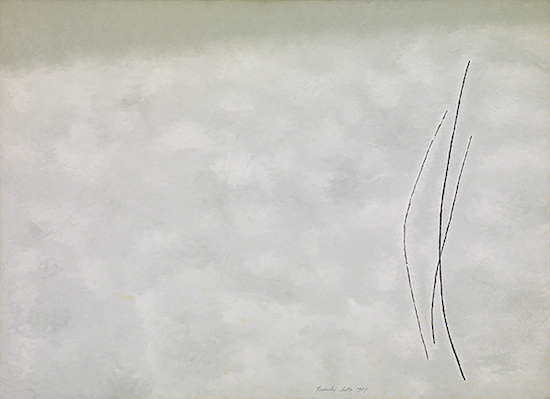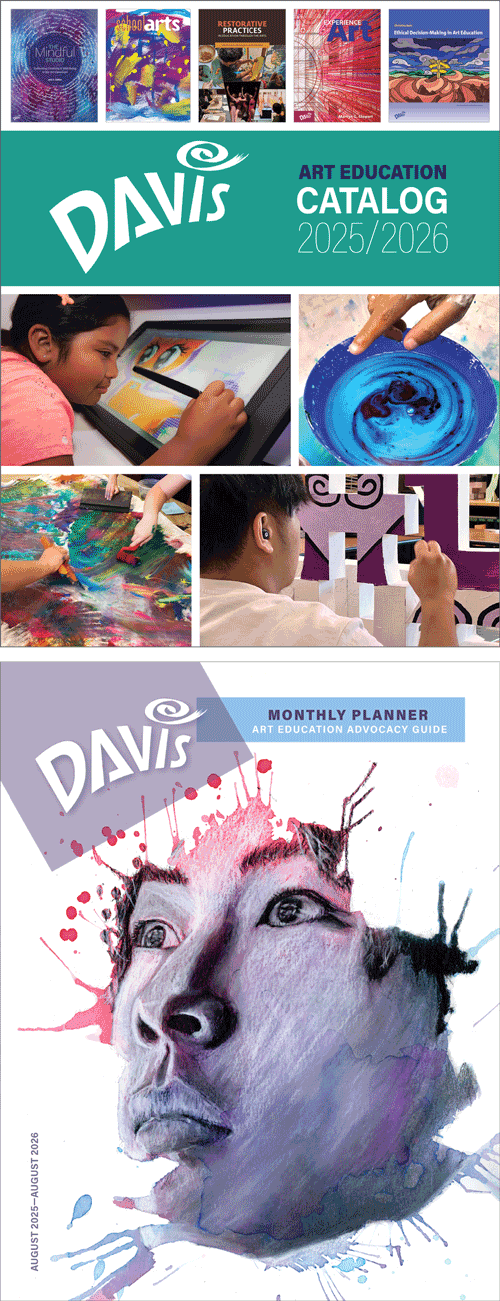AAPI Heritage Month 2025: Tadashi Sato
In celebration of Asian American and Pacific Islander Heritage Month, I’m featuring the work of Tadashi Sato. Sato was an American artist of Japanese descent who introduced traditional Japanese painting aesthetic into American modernism of the mid-1900s. He was one of the most active artists to emerge from Hawaii since World War II (1939–1945). From the late 1940s on, Sato blended his love of the landscape of the Hawaiian island Maui with the nonobjective fervor of the late 1900s.
 |
| Tadashi Sato (1923–2005, United States), Composition #10 - Three Lines, 1957. Oil on canvas, 29" x 40" (73.7 x 101.6 cm). Buffalo AKG Art Museum, Buffalo, New York. © 2025 Artist or Estate of Artist. (AK-3846) |
The mature works Sato produced have an overall soft tonality reminiscent of the misty chiaroscuro of Shijō School artists during the late Edo Period (1615–1868). Shijō School artists also stressed direct observation of nature. In many of Sato’s paintings, such as Composition #10 - Three Lines, thin lines become the focal point of his compositions, both contrasting with and connecting the large, soft-edged, cloud-like background.
Sato's paintings always possess simple subjects with natural forms emerging from either a landscape or the sea. In Composition #10 - Three Lines, the lines mimic seagrass or, indeed, the cursive Japanese calligraphy style called sōsho, which was inspired by wind blowing through seagrass. The cloud-like backdrop is reminiscent of the cloud backgrounds in yamato-e painting. The all-over composition also has affinities to the all-over abstractions of Abstract Expressionism.
Born in Kaupakalua on Maui, Sato is known for paintings, mosaics, and murals, many of them inspired by his experiences in Hawaii and the natural environment there. Sato's father was a calligrapher, and his grandfather was an ink painter in the Japanese sumi-e tradition. Sato attributed his first inspiration to pursue art to a poster-designing contest in third grade.
After serving in a Japanese American regiment during World War II, Sato attended Honolulu Academy of Arts from 1946 to 1948. After that, he studied at the Pratt Institute and Brooklyn Museum School in New York. Sato's early work was influenced by pioneer American abstractionist Stuart Davis (1892–1964), incorporating shapes that reflect Davis’s Cubism-inspired forms. While Davis used bright colors, Sato's work already mimicked the black-gray-white tradition of Japanese ink paintings. In 1955, he received a grant to study in Japan, returning to the United States in 1956. In New York, he further studied with other Japanese American artists.
By 1958, after Sato had returned to Hawaii, his work was characterized by the influence of hard-edge abstraction with lines and shapes. Over time, the edges of his forms softened into works that were more mystical and suggestive. Gradually, the Hawaiian environment and the sea became the main subjects of his increasingly abstract art.
Correlations to Davis programs: Explorations in Art 2E Grade 4: 6.7; Explorations in Art 2E Grade 5: 5.8, 6.5; Explorations in Art 2E Grade 6: 5.1; The Visual Experience 4E: 4.2; Davis Collections: Asian American Artists

Comments